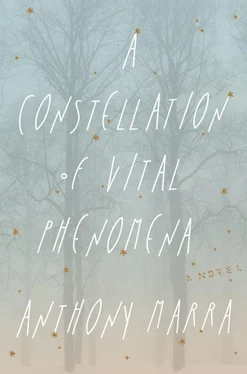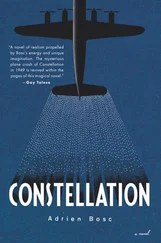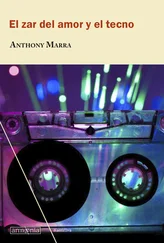He entered the musty blindness of the living room and crept toward the bedroom’s lantern light. “It’s me,” he said, in the doorway. “How are you?”
Beneath the blankets, Ula turned and smiled lazily. “Oh, just fine. Fine and fine. Your father came again. He told me a bedtime story.”
He prepared a dinner of lentils and canned apricots, pulled a chair beside the bed, and ate with her. His poor Ula. She really was losing her mind. Her health had improved in recent months, but this insistence that she spent her days with his ten-years-deceased father dispelled hope for recovery. Just as well. Her mind was one less thing she had left to lose. In a cigar box beneath the bed he hid a hypodermic needle and a vial of heroin he had swiped from the hospital.
After cleaning the dishes, he found his copy of Hadji Murád , steadying the wobbling dresser leg, and set it by the door. He secured the living room blackout curtains before opening Khassan’s envelope. Brass fasteners bound forty or fifty sheets. He parted the pages at random. Your father loved your mother’s nose. It was a big, ungainly thing, and he said it was still growing, and was slowly taking over her cheeks and forehead, so her entire face would soon submerge beneath her nose . He couldn’t start, not now, and slid the sheets back into the manila envelope.
In bed he cupped Ula’s bony hip. It wasn’t the hip he’d held on their wedding night as he fumbled and grunted, so self-conscious about his performance he wasn’t prepared for the embarrassment that accompanied the turn of her nose to the open window. But he loved it more, would miss it more. They used to argue about everything, quarrels that left them both hoarse the next morning, and they forgave each other in silence, with a cup of tea, a hand on the shoulder, unencumbered by the voices that divided them. He missed her scorn more than anything. How she looked at him as if he weren’t there. How she knew what the whole village suspected: that he was an incompetent physician, a worse bookkeeper, a romantic, a man who was never happier than when sketching birds in the woods. How she knew that and still loved him. He ran his fingers through her hair. Days since he had last washed it, and still so clean. Praise Allah she is speaking with my father. If she is looking so far over the horizon, she won’t see what’s in front of her.
“Do you remember who I am?” he asked, but she had already fallen asleep.
“You know how those things were invented?” Sonja asked with a nod to the stethoscope the girl was using to listen to her own heartbeat. “It was invented by a French physician who had a very fat patient. The patient was so fat that the French physician couldn’t hear the heartbeat through his chest. So he invented a stethoscope.”
“That’s weird,” the girl said, shifting the bell like an indecisive chess piece. “I’ve never seen a fat person before.”
“Never?”
“Never. But in my souvenirs I have the autograph of a man who used to be fat.”
The girl noted her heart rate on the chart Sonja had given her. Overcome by an inexplicable interest in medicine, the girl, draped in a lab coat that swished against the linoleum, had been following Sonja since dinner. It took the better part of an hour before Sonja realized the girl was imitating her. Her raw exasperation softened to a more delicate displeasure when the girl began scolding the air for carrying contagions. Poor child, she thought, let’s hope she finds a better role model.
The girl held the stethoscope bell like a microphone and, while kicking a drooping tail of bedsheet, began interviewing Sonja. “What’s it like being a surgeon?” she asked.
“Wonderful. Next question.”
“Why don’t you have kids?”
“They ask too many questions.”
“Who did you bribe to get into medical school?”
“Surprisingly, no one at all.”
“And are you the only woman surgeon in the world?”
“It feels like it.”
“What’s your favorite disease?”
“Chlamydia.”
“If they let you become a surgeon instead of a wife, would they let me become an arborist instead of a wife?”
“Who’s ‘they’?”
“You know.”
“Tell me.”
The girl’s face hollowed with resignation; it had been a long time, but Sonja remembered what it was to have that face, what it was to feel you were no brighter than the dumbest man, no stronger than the weakest boy, and with those ideas crowding your head no wonder subordination was the only inevitable outcome. She sat on the hospital bed beside the girl, remembering what it was like to have that face, and pitying it. “Listen, Havaa,” she said, summoning as much generosity as she could muster at this hour of night, “you can be exactly the person you want to be, okay? It may not seem that way, but things change when you get a little older. If you work hard, and give up certain things, and yes, resort to bribery now and then, you’ll be an arborist, or a sea anemonist, or anything else you want.”
And they kept talking, passing the stethoscope bell back and forth.
“Do you have any questions for me?” the girl asked at the end of the interview.
Since Akhmed had left that evening, Sonja had held the question as she would a long-awaited letter, terrified of what the envelope contained. “Did a Russian woman ever stay at your house?”
“Which one? Lots of people stayed with us.”
“Her name was Natasha.”
“Probably thirty Natashas at least.”
“She looked like me.”
Havaa gave her an appraising look. “Then no.”
“Like me only beautiful.”
The girl tilted her head. “I can’t imagine that.”
And it struck her. Why hadn’t she thought of it sooner? Akhmed’s sketch. She was upright and out of the room before Havaa could ask where she was going. Why had she asked him to take the portrait? Where would he have put it? She climbed to the fourth floor and worked her way back to her room, checking the new and old maternity wards, the land-mine man’s room, the empty administrative offices, the waiting room. While searching, her mind flashed to the day she had purchased the Buckingham Palace Guard nutcracker. True to form it had endured flights across Europe, every bump of the Samsonite, and even the shame of Alu’s name, without once breaking composure.
She had found the nutcracker in a convenience store sticky with the residue of spilled soda, where she stopped for cough drops before attending a lecture. It was four weeks to Christmas. The first war wouldn’t officially begin for twelve more days. She had bought it without once thinking of Natasha, on a whim, because Buckingham Palace was what foreigners thought of when they thought of London and she, Sonja with a j, was nothing if not foreign. Gray clouds lined the horizon as she climbed the escalator at Holborn and crossed Lincoln’s Inn Fields to the Royal College of Surgeons. There, at a neurosurgery lecture, she transcribed the snaking syntax of British academia in a bright pink notebook she had found in a fifty-pence bin. Attached to the Royal College was a museum dedicated to the history of anatomy and pathology. After thanking the lecturer, and pausing in the atrium for a cigarette and cough drop, she strolled through the museum’s curious exhibitions. There was a display detailing the history of non-Egyptian mummification. An alcove devoted to the tibia. One room exhibited the 1,474 skulls collected by nineteenth-century physician Joseph Barnard Davis. A fractured skull of a Roman woman found at Pompeii. The skulls of nine Chinese pirates hanged in Ningpo. Congolese from Leopold’s rubber plantations. But the skull that haunted her was that of a Bengali cannibal. Fully intact, the mandible still locked against the temporal, the twenty-two bones that constitute a human skull all accounted for. The eight bones forming the neurocranial brain case bathed in halogenated light. From the size of the plates, the prominence of the supraorbital ridge and temporal lines, as well as the overall size and solidity of the skull, she knew it belonged to a man. The skull appeared no different from those of the Chinese pirates, the Congolese plantation workers. She read the placard written a century and a half earlier by a Victorian phrenologist. There are no characteristics to distinguish the cranium of a cannibal from that of an ordinary man .
Читать дальше











